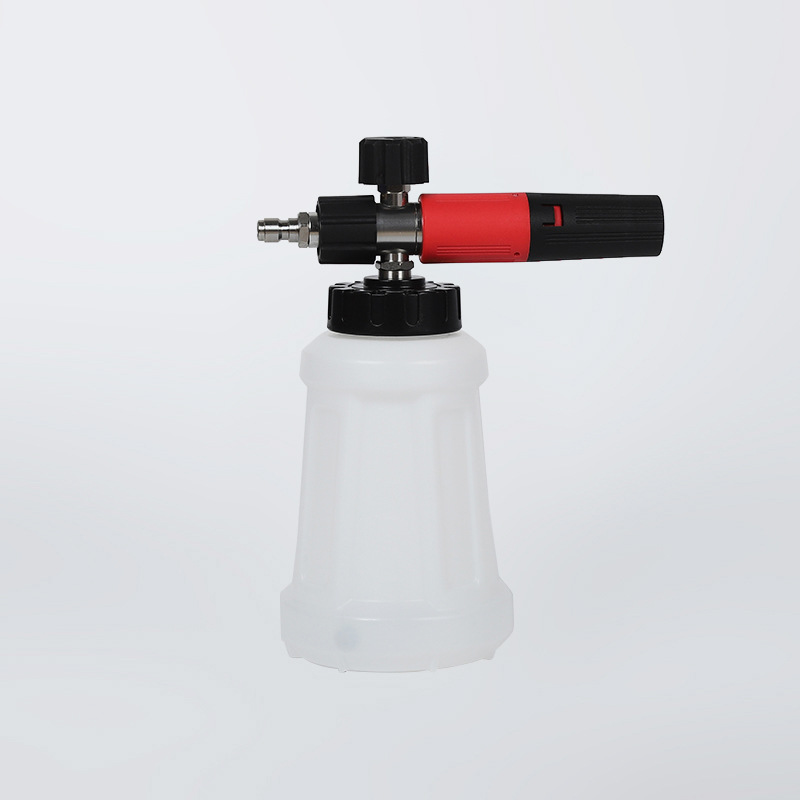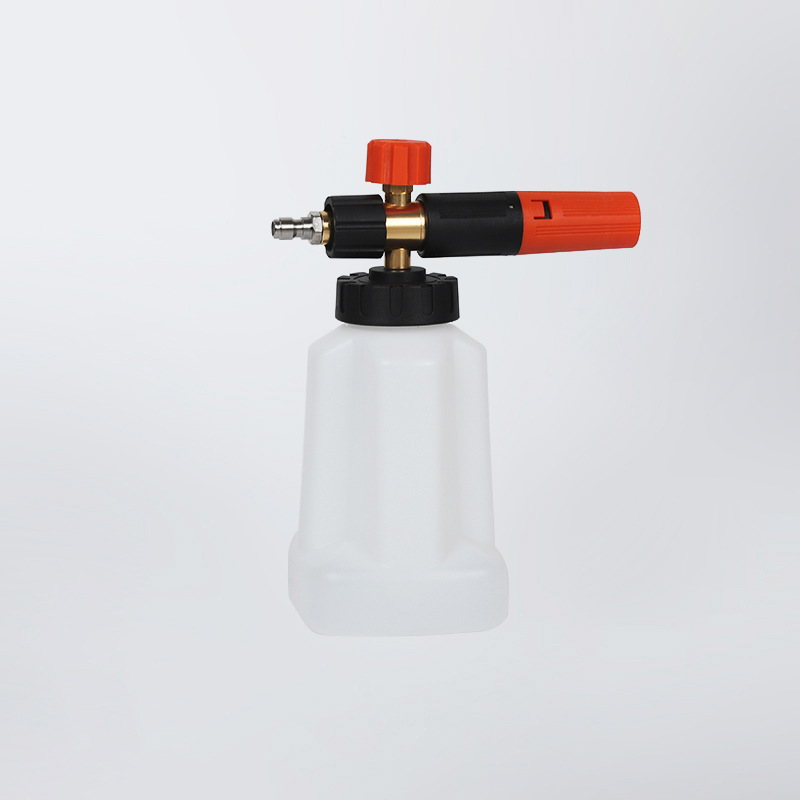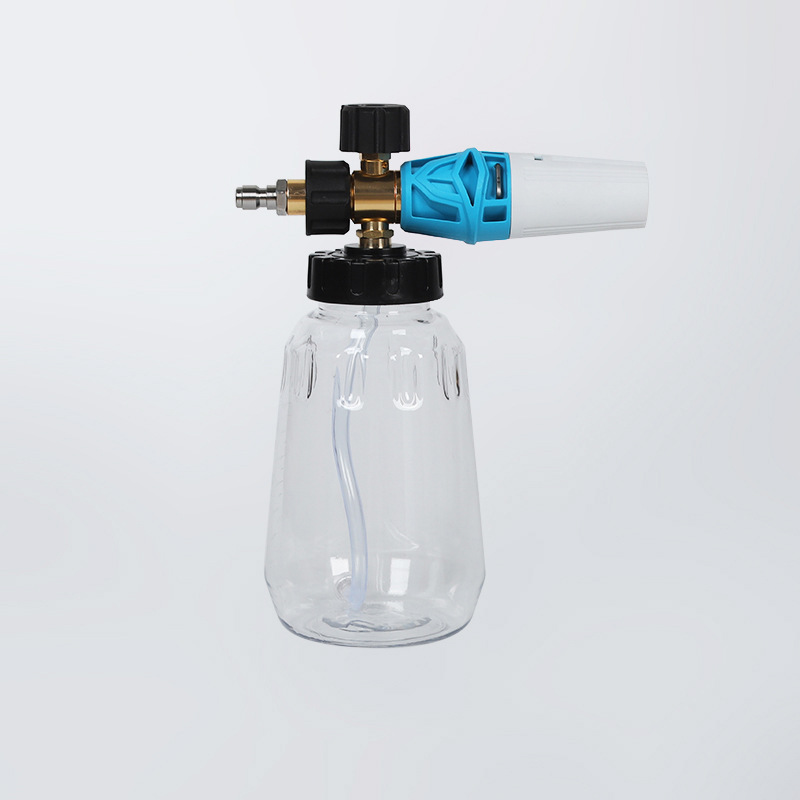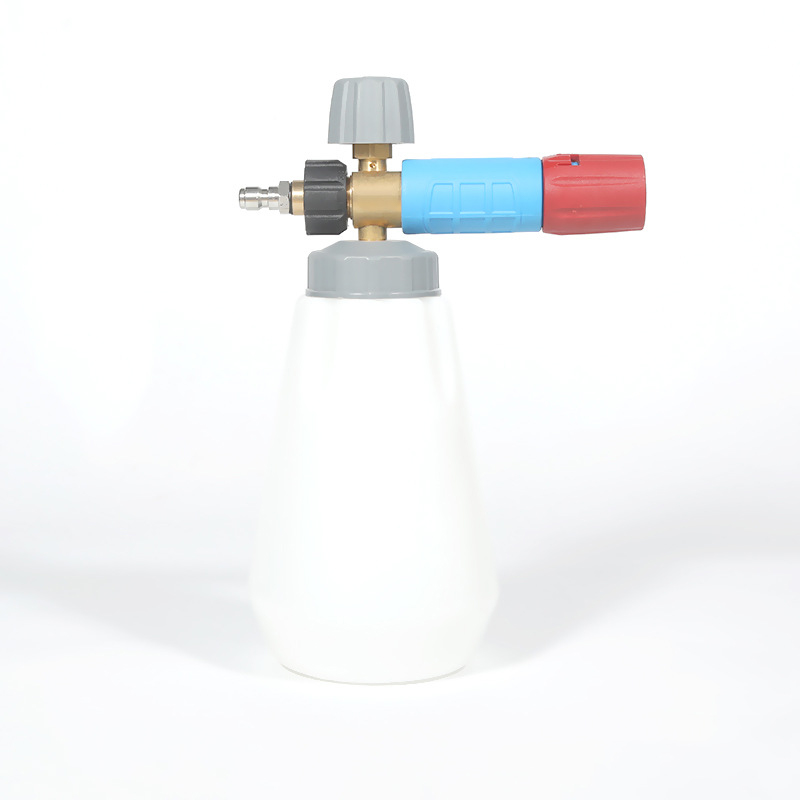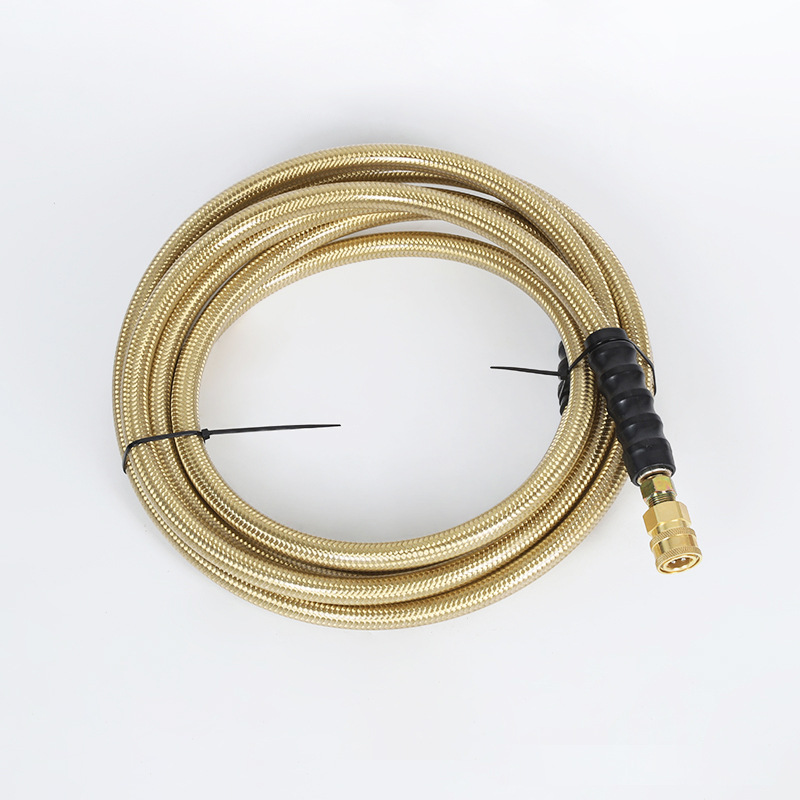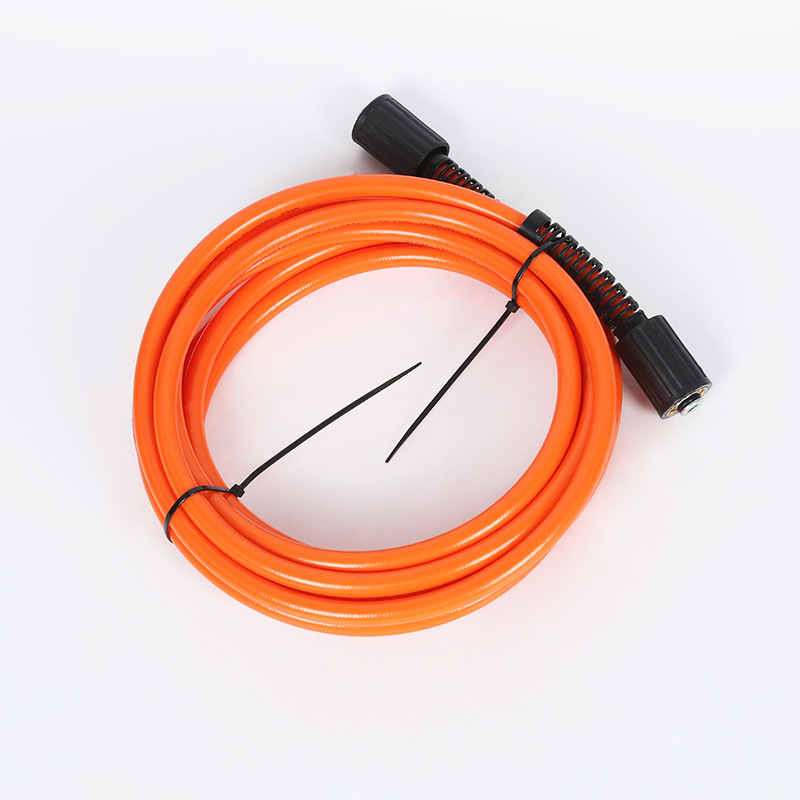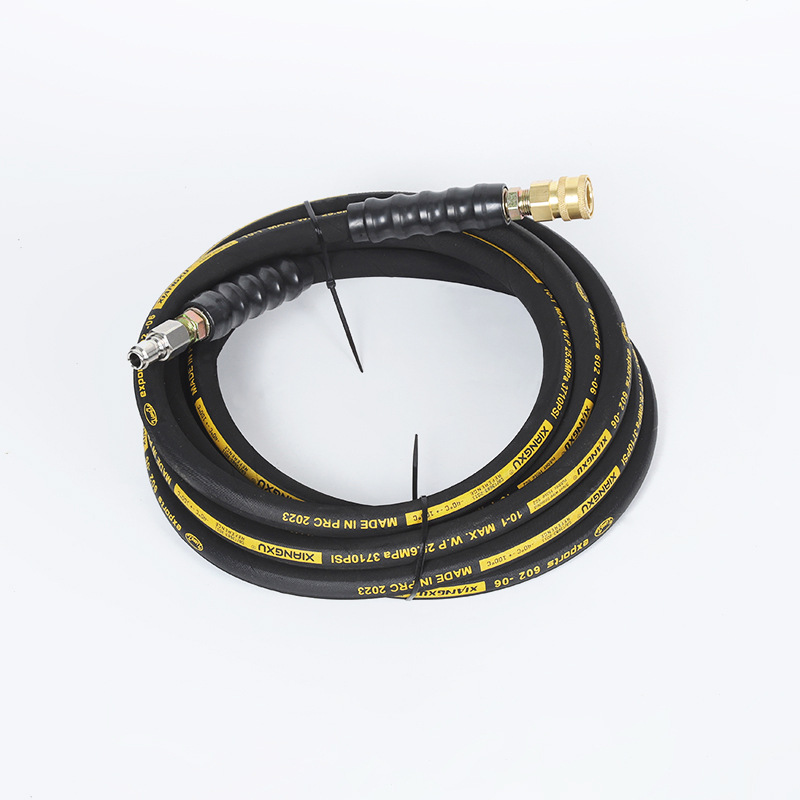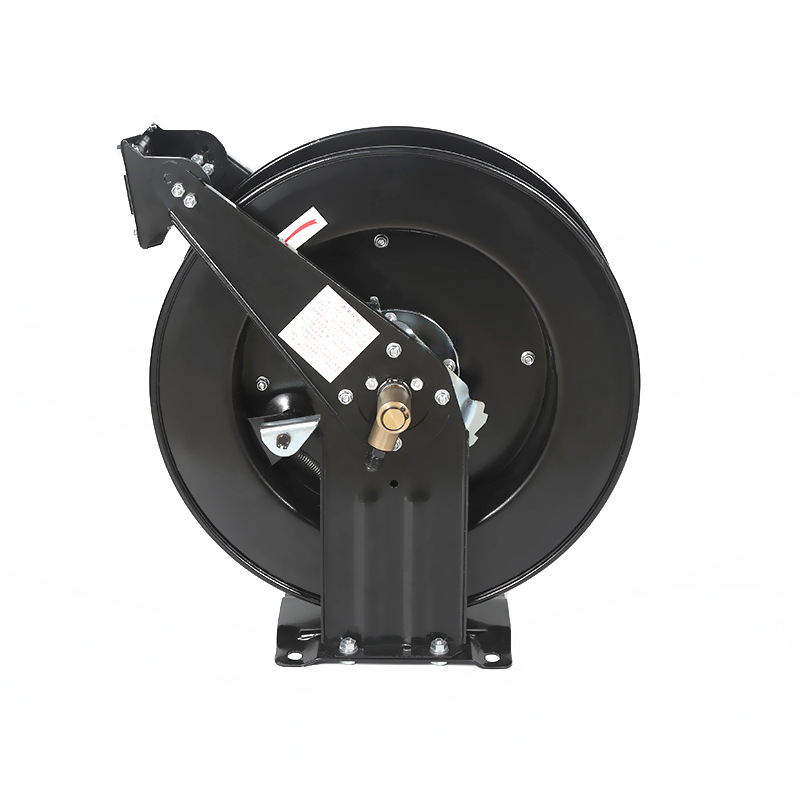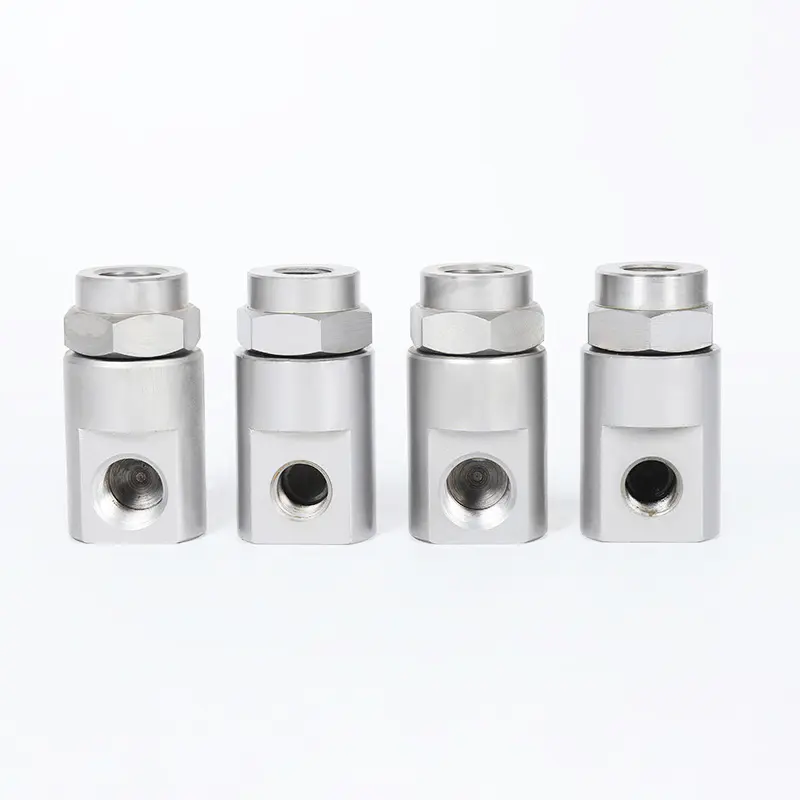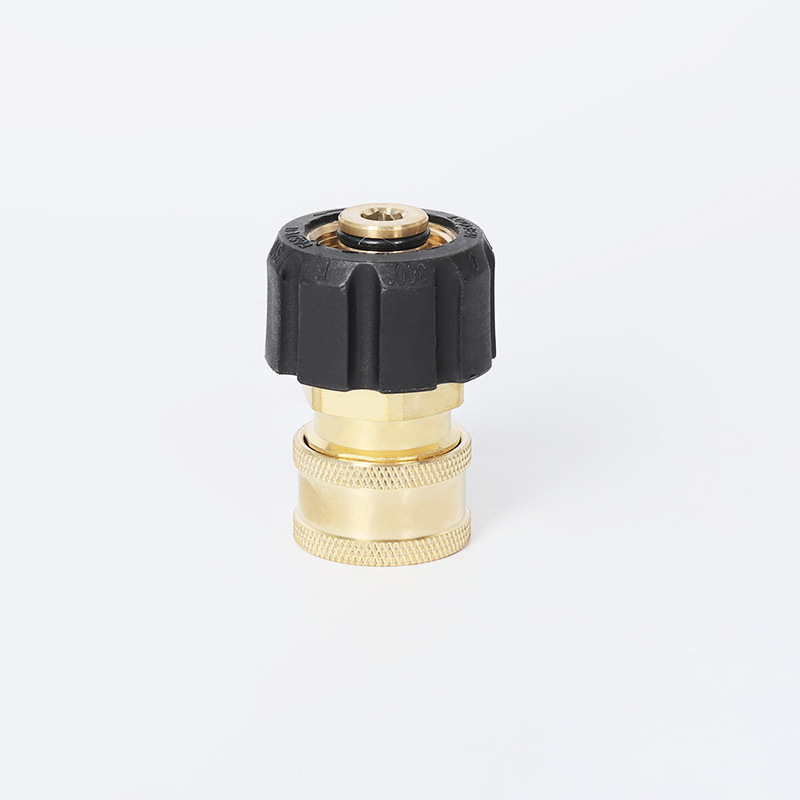Working principle of pressure washer foam pot
The pressure washer foam pot is mainly used to produce foam detergent to enhance the cleaning effect. Its working principle is to mix the detergent liquid with water in a certain proportion, and then spray the mixed liquid through high-pressure water flow to form rich foam covering the cleaning surface. The specific process usually includes the detergent being sucked from the foam tank, fully mixed with the high-pressure water flow, and forming a foam spray at the nozzle. The foam can be well attached to the surface of the cleaned object, prolonging the action time of the detergent, thereby improving the decontamination effect. The foam tank can also control the foam concentration by adjusting the mixing ratio to meet different cleaning needs. Overall, the foam tank is an auxiliary device in the high-pressure cleaning machine system, responsible for achieving effective mixing of detergent and water and the formation of foam.
Main components of pressure washer foam pot
The structure of the pressure washer foam pot mainly includes the following parts:
Tank body
The tank body is the main part of the foam tank, generally made of corrosion-resistant materials such as plastic or stainless steel. The tank body contains the detergent liquid and needs to have good sealing performance to prevent the detergent from leaking, while being able to withstand a certain pressure.
Inlet and outlet
The inlet is connected to the detergent supply source to ensure that the detergent can enter the tank smoothly. The outlet is connected to the liquid supply system of the high-pressure cleaner to transport the mixed foam liquid. The interface is usually equipped with a sealing ring to ensure that there is no leakage at the connection.
Suction pipe
The suction pipe is located inside the tank and is used to suck the detergent from the bottom of the tank to ensure the continuity of liquid supply. Its length and position design need to adapt to the tank volume and liquid height to avoid dead corners.
Mixing valve or regulating valve
The mixing valve is used to adjust the mixing ratio of detergent and water. By adjusting the valve size, the operator can control the concentration and spray effect of the foam to adapt to different cleaning tasks.
Nozzle assembly
The nozzle is an important outlet part of the foam tank, responsible for spraying the mixed liquid at appropriate pressure and form to form a foam layer. The design of the nozzle affects the form and coverage of the foam, and usually adopts a special structure to achieve uniform spraying.
Sealing device
The sealing device ensures a tight connection between the tank and the pipeline interface, prevents liquid and gas leakage, and ensures the normal operation of the system. Common sealing materials include rubber rings and O-rings.
Pressure regulating device (some models)
Some foam tanks are equipped with pressure regulating devices to monitor and adjust the pressure in the tank to ensure stable pressure during foam spraying and avoid equipment damage or uneven spraying due to excessive pressure.
The foam tank of the high-pressure cleaner achieves the mixing of detergent and water through the synergy of multiple components, and forms foam through the nozzle to enhance the cleaning effect. The design of each component has an impact on the overall performance. Reasonable structural design can improve the stability of use and cleaning effect. When selecting and maintaining the foam tank, users should pay attention to the quality and coordination of each component to ensure the smooth completion of the cleaning task.





